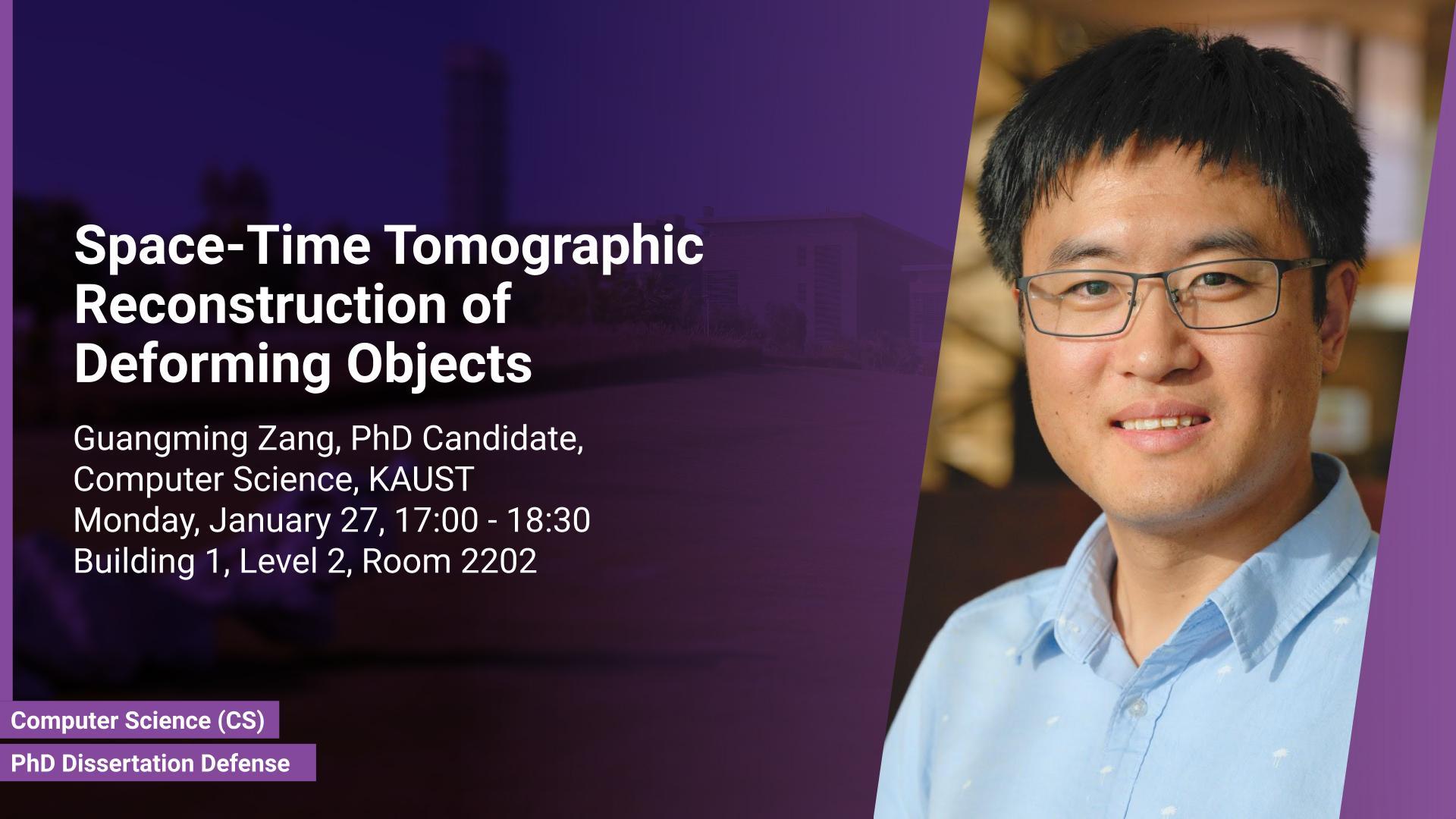Abstract
X-ray computed tomography (CT) is a popular imaging technique used for reconstructing volumetric properties for a large range of objects. Compared to traditional optical means, CT is a valuable tool for analyzing objects with interesting internal structure or complex geometries that are not accessible with. In this thesis, a variety of applications in computer vision and graphics of inverse problems using tomographic imaging modalities will be presented:
The first application focuses on the CT reconstruction with a specific emphasis on recovering thin 1D and 2D manifolds embedded in 3D volumes. To reconstruct such structures at resolutions below the Nyquist limit of the CT image sensor, we devise a new 3D structure tensor prior, which can be incorporated as a regularizer into more traditional proximal optimization methods for CT reconstruction. The second application is about space-time tomography: Through a combination of a new CT image acquisition strategy, a space-time tomographic image formation model, and an alternating, multi-scale solver, we achieve a general approach that can be used to analyze a wide range of dynamic phenomena. Base on the second application, the third one is aiming to improve the tomographic reconstruction of time-varying geometries undergoing faster, non-periodic deformations, by a warp-and-project strategy. Finally, with a physically plausible divergence-free prior for motion estimation, as well as a novel view synthesis technique, we present applications to dynamic fluid imaging (e.g., 4D soot imaging of a combustion process, a mixing fluid process, a fuel injection process, and view synthesis for visible light tomography), which further demonstrates the flexibility of our optimization frameworks.
Brief Biography
Guangming is a Ph.D. candidate in Computer Science at the Visual Computing Center (VCC) under the supervision of Prof. Wolfgang Heidrich and Prof. Peter Wonka. After graduation with a Bachelor's degree in Software Engineering from China University of Geosciences in 2013, he joined KAUST-UCAS dual degree program and received his Master's degree in Computer Science respectively from University of Chinese Academy of Sciences and KAUST in 2016 . Later on, he rolled over into PhD program at KAUST. His research interests lie in the area of computational imaging, computer graphics, optimization and machine learning.


